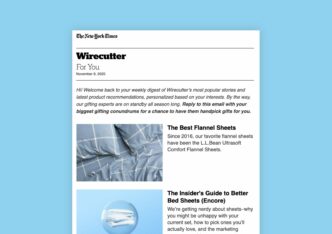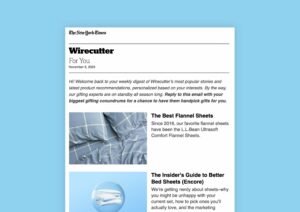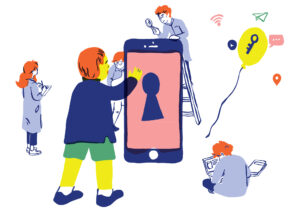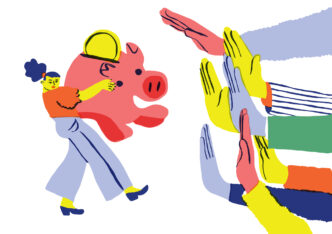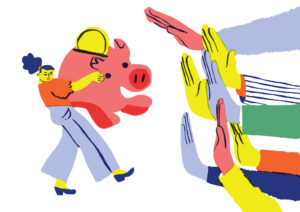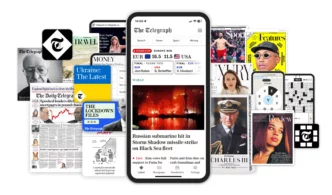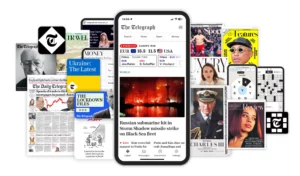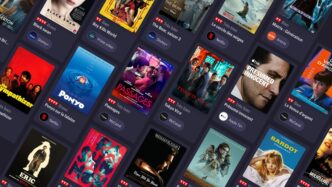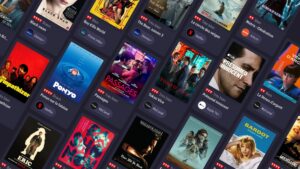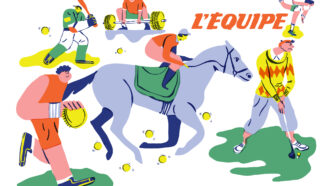
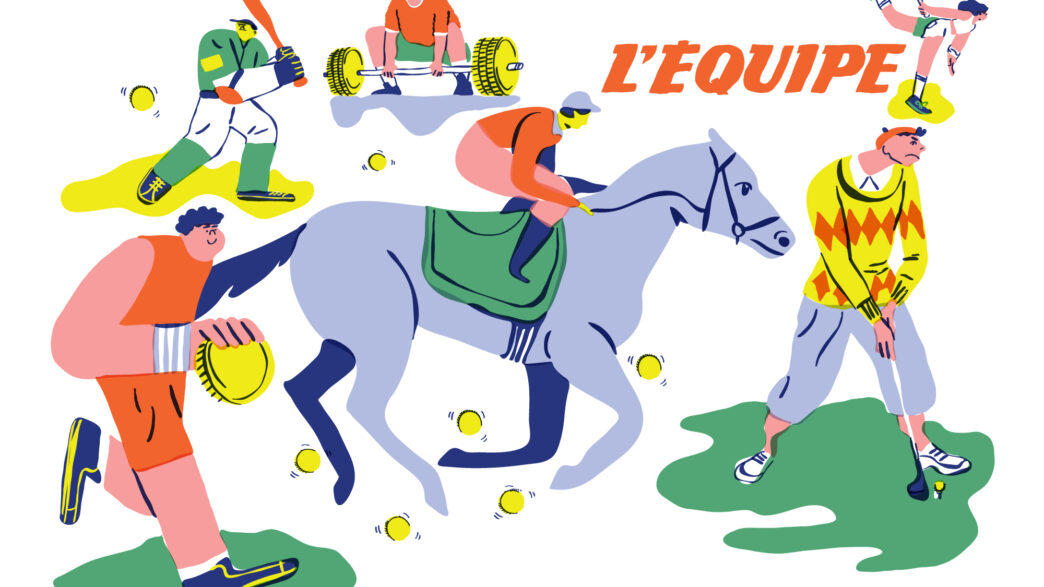
Romain L'hote is Marketing Director of L'Équipe, the emblematic French sports newspaper with a daily digital readership of 2.5 million, and over 190,000 subscribers to its paid digital offer. Subscriber acquisition is, as it is for many, at the heart of its monetization strategy. Today, Romain shares how, by trial and error, his team managed to halve acquisition costs on advertising platforms, while increasing both attribution and last-click subscriptions.
Over the past 3 years, our subscriber portfolio has grown significantly, thanks to a number of strategic choices, notably the shift from mass marketing to more precise reader targeting.
But, despite the power of our own channels (site, app and CRM, which account for the lion’s share of our subscriber recruitment), we continue to invest in paid to support our strategy. In 2023, 90% of our media investments were made on Google and Meta, with an almost even split. We are also combining this with other, less well developed, types of spending (X, TikTok, Twitch, influence).
Changing the way we do paid
Halving our subscriber acquisition costs didn’t happen overnight, of course. It took us two years to make significant progress on our two main KPIs:
- Conversion & cost of acquisition platform attribution (at 7 and 30 days)
- Conversion & last-click acquisition cost
There are several methodological biases in the measurements we use, not least because we don’t have an attribution tool:
- We don’t capture information on non-consenting audiences
- We have to rely on platform figures and their notion of post-click and post-view consent (7 days post-click, 1 day post-view for Meta, up to 30 day post-click for Google)
- With possible data duplication between different platforms…
However, our work on paid acquisition has been structured around three axes:
- Firstly, segmenting audiences as finely as possible
- Secondly, to restructure our accounts on advertising platforms
- Finally, testing and personalizing our creative messages
1- Segment audiences as finely as possible
Generally speaking, the trend in paid marketing is to work broadly, i.e. with large audiences regardless of specific criteria.
But we’re a special case. Thanks to our strong audience, and therefore large data flow, segmenting our audiences seemed a crucial first step.
Historically, targeting was based on a readers’ favorite sports, but the results were rather uneven. We therefore chose to segment users in two ways:
- According to a reader’s status: anonymous, member, former subscriber, etc;
- According to their content consumption habits: volatile direct users, readers who remain on free articles, paid articles, videos…
Going from a segmentation with a myriad of divisions, often with very narrow targeting, we instead opted for 3 campaigns based on level of interest, each broken down into only 4 or 5 segments, in addition to a few one-off campaigns.
Given the human resources allocated to the subject (1.5 FTEs), our primary goal was to have something controllable and measurable; without having to micro-pilot segments of 500 people, which may perhaps have a competitive CPA but will ultimately generate few conversions.
Of course, not all groups have the same volume, profile or propensity to subscribe…
You’ll also enjoy: The Risk of Personalization: do people want and trust it?
2. Restructuring our accounts on advertising platforms
In order to implement our targeting strategy, a lot of behind-the-scenes work went into structuring accounts around our 3 main target audience families, 3 “campaigns” in the platform sense.
We structured accounts using the TOF-MOF-BOF method, a funnel-based targeting system based on third-party and proprietary data:
TOF (Top of Funnel) audience:
The TOF audience refers to people whose understanding of our paid product, and the value it provides, is not determined. These readers are generally presented with subscription awareness ads.
Trigger: third-party data, mainly based on centers of interest, possibly non-qualified visits (visits to our home page and direct mail).
MOF (Middle of Funnel) audience:
The MOF audience has already shown some interest in the L’Équipe brand and is aware of our paid subscription.
Trigger: these are logged-in members, and/or browsers on specific pages such as our live match commentary.
BOF (Bottom of Funnel) audience:
The BOF audience is made up of people who are already interested in our premium offer, are highly engaged and are close to converting.
Trigger: visit to our subscription landing page, tunnel entry, ex-subscribers, etc.
Our Google Ads campaign page
The data is captured from our platforms and from our CDP. We’ve also created a bridge between these and subscription management tools to be able to send ‘ex-subscriber’, ‘subscriber to X offer’ information.
Example of a campaign for a BOF (Bottom of funnel) user
Trigger: a user has seen our subscription landing page:
This reader is then targeted by a “BOF” advertisement:
Example of a campaign for a MOF (Middle of funnel) logged member:
Example of a campaign for a BOF (Bottom of funnel) ex-subscriber:
3. Personalizing messages
After structuring our audiences, it was time to think about how to personalize our messages. Visuals, pricing, offers, testing every word… it’s been a long, whole year of testing to find the right hook for the right customer! And of course… we don’t have the perfect combination.
Here’s an example of message personalization: contextualized offers for the Tour de France and the Rugby World Cup.
We tested very regularly… Here are three things we’ve learned, some of which are counter-intuitive:
#1 Stop pushing sponsored articles
Betting money on a specific “paywall” article, in the hope that it will convert readers into subscribers, is no longer a strategy we follow: the acquisition costs are too high in attribution, and in last-click. What’s more, their lifespan is too short to promote them long enough, and native posts already bring enough audience.
#2 Set up awareness campaigns to generate subscriptions
On very small targets, we sometimes found it difficult to distribute our campaigns. So, in order to improve our conversion volume, we tested converting on awareness campaigns… and it works!
The notoriety campaigns enabled us to distribute our campaign more widely, but also to maintain an acquisition cost similar to that of a classic conversion campaign.
#3 Don’t mess with the algorithm
This has become our biggest fear.
In the case of any big promotional campaigns, we could always increase our investment very sharply for the first few days. But now, for each campaign, we try to scale gradually to avoid upsetting the algorithms and maintain stability on our account and our performance.
Paid strategy 2.0: the results
Thanks to our new strategy, we have substantially increased both attribution and last-click subscriptions, with a 2-fold reduction in acquisition costs in both cases.
Cost per acquisition (attribution)
Of course, not everything has been a success, and there have been a few flops, particularly with our paid influencer campaigns, where the ROI has never been proven.
Example of a failed influencer campaign to promote the L’EQUIPE gift card for Christmas 2023, with… 1 conversion
Now what?
Our projects for 2024:
- Continue testing, in a rapidly changing ecosystem with the end of third-party cookies, and with deadlines this summer that are likely to shuffle the deck a little on targeting, performance and metrics
- Develop video formats where we’re not particularly ahead of the game, and in certain verticals with an offbeat creative focus for TikTok to support one of the pillars of our overall brand strategy: reaching young people. At the same time, we want to promote subscriptions in a different way, and understand how algorithms work.
- Try to recruit more qualified leads. Recruit less, but better, with higher ARPU. We want to target our offers even more, giving priority to our former subscribers, whose conversion rate is 13 times higher than that of our members.

